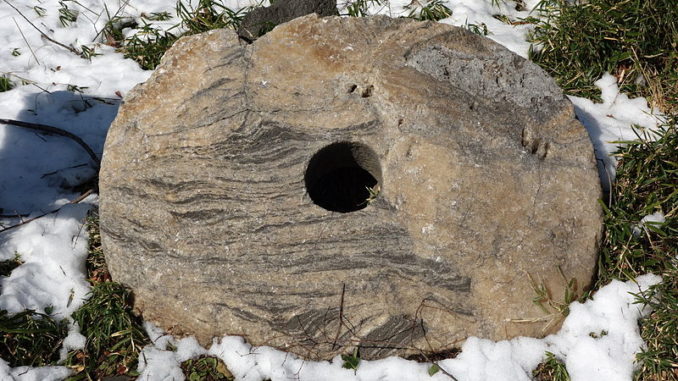
Throughout most of the history of the world, the trend has been toward shrinking the size of currency. Pieces of metal gave way to minted coins which held a greater value than the base metal. Coins gave way to paper bills, paper bills gave way to credit cards. Each time, greater wealth could be carried around with less encumbrance which in turn inspired easier commerce.
And then there’s Yap.
An island in Micronesia (the cluster of hundreds of small islands northwest of Australia and New Zealand), Yap is the home to the bulkiest of all active currencies, the Rai. These are circular stones with holes in the center.
Coins with center holes are not unique; grooved versions were used as telephone tokens throughout parts of Europe in pre-cellphone days. Japanese 5 and 50 yen coins have holes in them. Many ancient cultures used them, and some of them were even stone. What makes the Rai unique is their size.
The smallest are only an inch and a half in diameter. They get larger from there, however. Much larger. The largest, measuring around twelve feet in diameter, are bigger than average sized cars.
Economists love the Rai because it’s an example of fiat currency… currency that has no intrinsic value… developing naturally. After all, many of the things are too big to easily move, so people would simply transfer ownership of a stone sitting someplace and leave it there. But the Rai does have some intrinsic value; the smaller ones are physically traded and in theory the larger ones can be moved. It’s a quasi-fiat currency… I’m sure the economists have a name for that, too, but I don’t know it.
Instead I know what most non-economists recognize when they see the Yap island currency: that looks remarkable.
Here’s a video from Yap Day 2019. It was held just a few days ago (March 1), and it displays some of the Rai amidst the cultural festivities.
Question of the night: If you could safely venture to one destination in the world for a 24 hour visit, where would it be?
